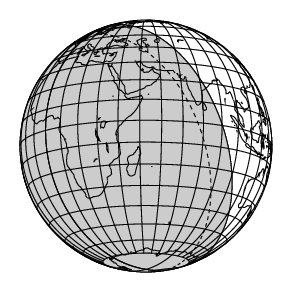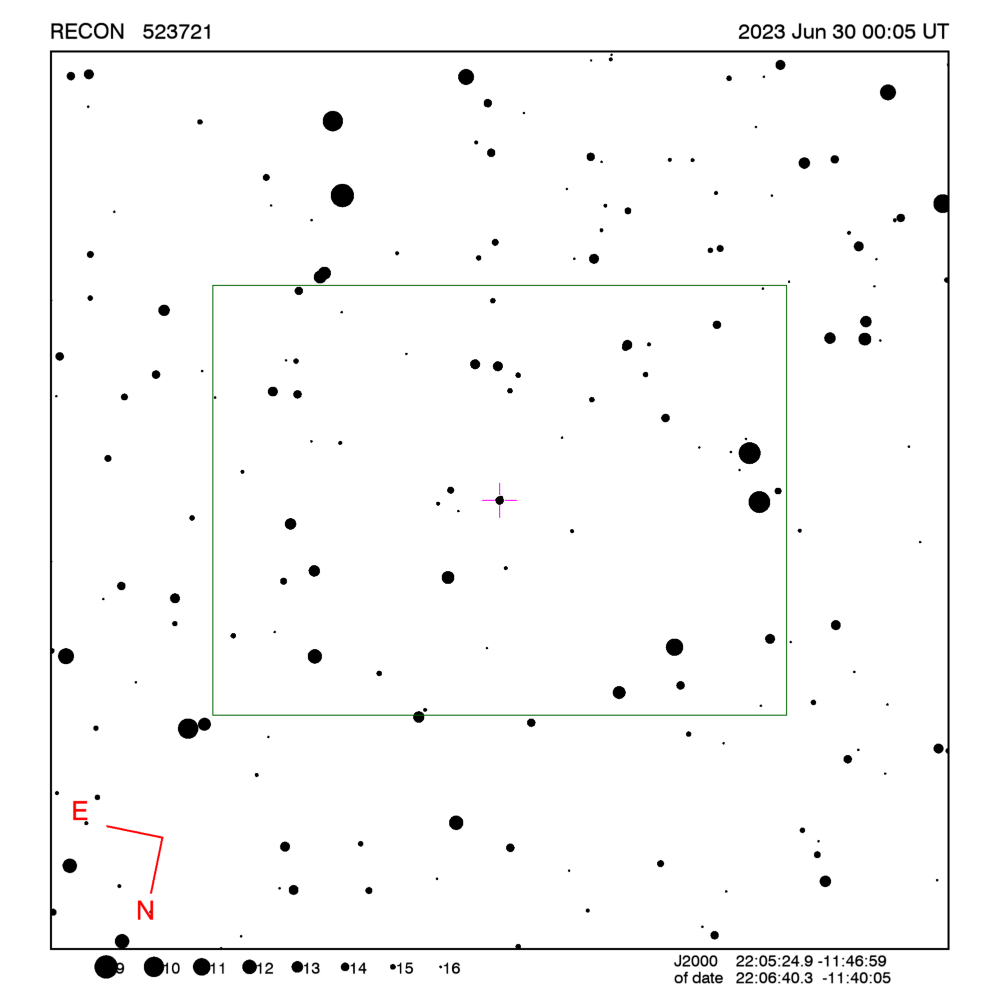RECON: TNO occultation with 523721
Event between (523721) 14LR28 and star GA0780:21964985
with event index number of 2329458
Geocentric closest approach at 2023/06/30 00:02:46 UTC
J2000 position of star is 22:05:24.9 -11:46:59
Equinox of date position of star is 22:06:38.1 -11:40:17
Stellar brightness G=14.7,
use SENSEUP=128 with the MallinCam and and exposure
time of 2 seconds with the QHY174 camera.
Star is 98 degrees from the moon.
Moon is 84% illuminated.
TNO apparent brightness V=22.0
 TNO is 46.3 AU from the Sun
and 45.6 AU from the Earth.
TNO is 46.3 AU from the Sun
and 45.6 AU from the Earth.
The TNO is moving 13.9
km/sec on the sky relative to the star, or,
1.5 arcsec/hr.
The 1-sigma error in the time of the event is 162 seconds.
The 1-sigma cross-track error in the shadow position is
1742 km.
The TNO has an absolute magnitude Hv=5.3
Diameter=512.9 km assuming a 5% albedo -- 37.6 sec chord
Diameter=209.4 km assuming a 30% albedo -- 15.3 sec chord
Dynamical classification is CLASSICAL
Star training set for 523721, (2023/06/30 00:05UT)
Object RA Dec mag sep mel
Fomalhaut 22:58:56.6 -29:29:50 1.2 21.58 101
33Iot Aqr 22:07:42.2 -13:45:17 4.3 2.10 97
PPM 239851 22:09:49.4 -11:29:52 7.6 0.79 99
PPM 239762 22:06:09.4 -11:41:36 9.6 0.13 98
523721 22:06:40.3 -11:40:05 14.7 98
Positions are for equinox of date

Azimuth is measured in degrees eastward from north.
North is at an azimuth of 0, due East is at an azimuth
of 90 degrees, due South is 180, and due West is 270.
Do not use the listing below for the RECON CPC 1100 telescopes.
This is provided for other non-team facilities.
Star training set for 523721, (2023/06/30 00:05UT)
Object RA Dec mag sep mel
Fomalhaut 22:57:39.6 -29:37:24 1.2 21.58 101
33Iot Aqr 22:06:26.3 -13:52:12 4.3 2.10 97
PPM 239851 22:08:34.2 -11:36:49 7.6 0.79 99
PPM 239762 22:04:54.1 -11:48:29 9.6 0.13 98
523721 22:05:24.9 -11:46:59 14.7 98
Positions are for J2000
Event circumstances last updated at 2022/10/24 03:55:43 UT
Marc W. Buie,
Southwest Research Institute
RECON
 TNO is 46.3 AU from the Sun
and 45.6 AU from the Earth.
TNO is 46.3 AU from the Sun
and 45.6 AU from the Earth.
